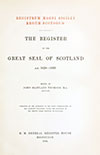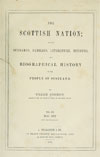

Joan Blaeu, Amsterdam, 1654map image courtesy of NLS
Old Purves Hall is a 16th century tower house which was extended in the 17th and 18th centuries.
The property was originally known as Nether Tofts and seems to have been associated with the nearby lands of Mersintoun. In September 1489 “the lands and mill of Mersintoun, with the over and nether tofts thereof” were resigned by Hugh de Dunbar of Bele and granted by James IV to Sir Robert Lauder of Edrington.
In September 1545 the Earl of Hertford is recorded as having burned Over and Nether Tofts, but there is no mention of whether there was a tower at Nether Tofts or some other type of building. The tower house therefore may have been a new building constructed in the second half of the 16th century following Hertford’s raid, to defend against future attacks, or a rebuilding of an earlier destroyed tower.
Sir Robert’s great-great-grandson, Sir Robert Lauder of Edrington and The Bass, granted various properties, including the lands of Over and Nethir Toftis, to William Maitland of Lethington, Royal Secretary, and his wife, Mary Fleming, in June 1569.
In June 1606 William’s son and heir, James Maitland of Lethington, sold the lands of Over and Nether Toftis to Archibald Douglas who subsequently styled himself Archibald Douglas of Toftis or Tofts.
Following Archibald’s death his son, William Douglas of Tofts, sold Over and Nether Tofts to John Belshes, a member of the Faculty of Advocates and possibly a younger son of Belshes of Belshes, in 1622. John was succeeded by his son, Sir Alexander Belshes, also an advocate. Sir Alexander died without issue in 1656 and Tofts passed to his half-brother, John, along with considerable debts.
Tofts is marked as a tower on Gordon’s mid-17th century map and as the small tower of N. Tofts on Blaeu’s slightly later map, both based on Pont’s late-16th century work.

Robert Gordon, c. 1636-52map image courtesy of NLS
In 1673 John sold Tofts to Sir William Purves, Solicitor General for Scotland, who renamed the property Purves Hall. Sir William described the mansion of Tofts as being “reduced to a shell of a house and would not hold out a drop of rain” and set about extending and modernising the building. A new wing projecting to the north-east may have dated to 1675, as a classically-detailed, bipartite window of that date survives built into the tower’s late 19th century replacement, Purves Hall, nearby.
Following his death in 1684 or 1685 Sir William was succeeded by his eldest son, Sir Alexander, who also succeeded his father as Solicitor General. Sir Alexander died in 1701 and his eldest son, also Sir William, succeeded him, dying in 1730. Sir William’s eldest son, another Sir William, married Lady Ann Hume-Campbell, eldest daughter of Alexander Hume-Campbell, 2nd Earl of Marchmont.
In 1738 Sir William was responsible for enlarging many of the windows and remodelling the interior. He died in 1761 and was succeeded by his second son, Sir Alexander, his eldest son, William, having predeceased hum, In 1790 Sir Alexander built a new wing to the rear which carries his initials, “S AP 1790” (for Sir Alexander Purves), carved on a lintel.
In 1812 the family moved to Marchmont House, by which time Purves Hall was in a neglected state. In the middle of the 19th century the tower was described as “almost in ruins” and “not tenable”, with the gardens and outbuildings being let by Major Purves to a market gardener who cultivated the ornamental gardens.
When the aforementioned new house, now known as Purves Hall, was built to the south-east in the late 19th century parts of Old Purves Hall were demolished and the house left as a ruin.
Old Purves Hall was later renovated and is now a private home.
Alternative names for Old Purves Hall
N. Tofts; Nather Toftis; Nether Toftis; Nether Tofts; Nethir Toftis; Old Purves House; Purves Hall; Purves-Hall; Purveshall; Purvishall; Toftis; Tofts





















